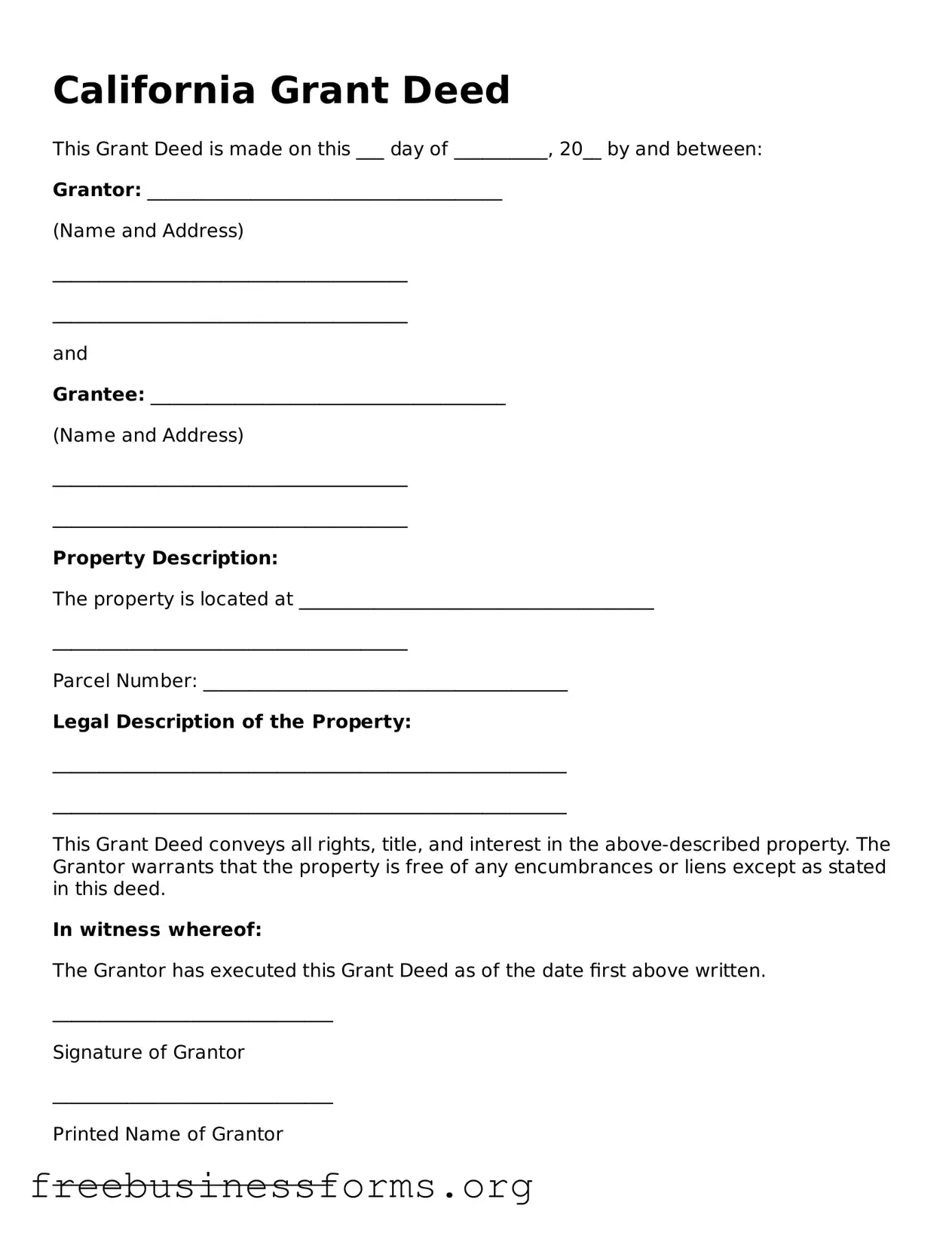California Grant Deed
This Grant Deed is made on this ___ day of __________, 20__ by and between:
Grantor: ______________________________________
(Name and Address)
______________________________________
______________________________________
and
Grantee: ______________________________________
(Name and Address)
______________________________________
______________________________________
Property Description:
The property is located at ______________________________________
______________________________________
Parcel Number: _______________________________________
Legal Description of the Property:
_______________________________________________________
_______________________________________________________
This Grant Deed conveys all rights, title, and interest in the above-described property. The Grantor warrants that the property is free of any encumbrances or liens except as stated in this deed.
In witness whereof:
The Grantor has executed this Grant Deed as of the date first above written.
______________________________
Signature of Grantor
______________________________
Printed Name of Grantor
______________________________
Signature of Grantee
______________________________
Printed Name of Grantee
State of California
County of ______________________
On this ___ day of __________, 20__, before me, a Notary Public in and for said County of ________________, personally appeared ___________________________, known to me to be the person(s) whose name(s) is/are subscribed to the within instrument and acknowledged that he/she/they executed the same.
WITNESS my hand and official seal.
______________________________
Notary Public for the State of California
My commission expires: ______________
